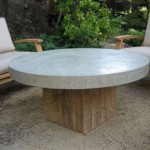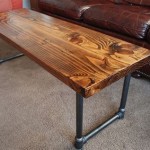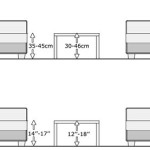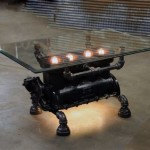Choosing the Perfect Couch Coffee Table Book
Selecting the ideal coffee table book involves a careful consideration of various factors, ranging from aesthetic appeal to intellectual engagement. These books, often prominently displayed in living rooms and waiting areas, serve as conversation starters, visual enhancements, and reflections of the homeowner's interests and values. This article will delve into the key aspects of choosing a coffee table book that complements the space and satisfies the reader's or viewer’s preferences.
Considering the Size and Shape
The physical dimensions and form factor of a coffee table book significantly impact its visual presentation and practicality. The size should be proportionate to the coffee table itself. A book that is too large can overwhelm the surface, leaving little room for other items and making it difficult to handle. Conversely, a book that is too small may appear insignificant and fail to make a visual statement. The shape is equally important. While rectangular books are the most common, square or even uniquely shaped books can add a distinctive touch, provided they align with the overall design aesthetic of the room.
When determining the appropriate size, consider the available space on the coffee table. Measure the surface area and leave a buffer for other decorative objects, such as candles, trays, or coasters. As a general guideline, aim for a book that occupies no more than one-third to one-half of the table's surface. For larger coffee tables, multiple smaller books can be arranged to create a more dynamic and layered display. The thickness of the book should also be taken into account. A very thick book can appear bulky and may be less inviting to browse, while a thin book may lack visual impact. A moderate thickness, typically between one and two inches, is often ideal.
The shape of the book should complement the shape of the coffee table. For example, a square coffee table may be well-suited to a square book, while a rectangular table may benefit from a rectangular or landscape-oriented book. Consider the overall lines and angles of the room. If the space features predominantly angular shapes, a book with clean, geometric lines will likely integrate seamlessly. If the room has more rounded features, a book with softer edges or a more organic design may be a better fit. Unusual book shapes, such as circular or triangular, can be intriguing additions, but they require careful placement and may not be suitable for all coffee tables.
Matching Content to Interests and Aesthetics
The content of a coffee table book should reflect the homeowner's interests, passions, and values. This ensures that the book is not merely a decorative object, but also a source of enjoyment and intellectual stimulation. Common themes include art, photography, travel, architecture, fashion, history, and nature. The choice of theme should align with the homeowner's personal preferences and the overall style of the home. For example, a modern minimalist home might benefit from a book on contemporary art or architectural design, while a more traditional home might be better suited to a book on classic literature or historical landmarks.
Beyond the broad theme, consider the specific subject matter of the book. A book on photography, for instance, could focus on landscape photography, portrait photography, or street photography. A book on art could explore a particular period, such as the Renaissance or Impressionism, or a specific artist, such as Van Gogh or Picasso. The level of detail and complexity should be appropriate for the intended audience. A book that is too technical or academic may be overwhelming for casual browsing, while a book that is too simplistic may lack depth and substance. Look for books that strike a balance between visual appeal and informative content.
The aesthetic style of the book should also complement the decor of the room. Consider the color palette, textures, and overall mood of the space. A book with vibrant colors and bold imagery can add a pop of excitement to a neutral room, while a book with muted tones and subtle designs can create a sense of calm and sophistication. The cover design is particularly important, as it is the first thing that visitors will see. Choose a cover that is visually appealing and that reflects the content of the book. Consider the materials used in the cover, such as linen, leather, or paper, and how they will complement the other materials in the room. The book's design should integrate harmoniously with the surrounding environment, creating a cohesive and visually pleasing effect.
Considering the Quality and Presentation
The physical quality of a coffee table book is a critical factor in its overall appeal and longevity. Aspects such as the paper stock, printing quality, binding, and overall construction contribute to the book's tactile and visual experience. High-quality materials and craftsmanship not only enhance the book's aesthetic appeal but also ensure that it will withstand frequent handling and browsing over time. The selection of a durable and well-made book represents an investment in a lasting piece of home decor.
Paper stock is a fundamental element. Thicker, heavier paper stocks tend to offer superior image reproduction and a more luxurious feel. Coated papers, such as glossy or matte finishes, can enhance the vibrancy and clarity of photographs and illustrations. Uncoated papers, on the other hand, provide a more textured and tactile experience, which can be particularly appealing for books on art or design. The choice of paper stock should be appropriate for the content of the book and the desired aesthetic. For example, a book on fashion photography might benefit from a glossy coated paper, while a book on nature photography might be better suited to a matte or satin finish.
Printing quality is essential for accurately reproducing the colors and details of the images and text. Look for books that have been printed using high-resolution techniques, such as offset lithography, which provides superior color accuracy and sharpness. The quality of the binding is also crucial. A well-bound book will lie flat when opened, allowing for easy viewing of the pages. Common binding methods include case binding, which is durable and long-lasting, and perfect binding, which is more economical but less robust. The overall construction of the book should be solid and sturdy, with no loose pages or visible defects. Inspect the book carefully for any signs of wear or damage before making a purchase.
The presentation of the book, including features such as dust jackets, slipcases, or special editions, can enhance its overall appeal. A well-designed dust jacket can protect the book from dust and scratches while also adding a decorative element. Slipcases provide an extra layer of protection and can add a touch of elegance to the presentation. Special editions, which may include signed prints or additional content, can be valuable additions for collectors. Consider the overall packaging and presentation of the book when making a decision.
Evaluating the Book's Functional Aspects
While aesthetic appeal is paramount, the functionality of a coffee table book should not be overlooked. This encompasses the book's readability, the clarity of its layout, and its potential for initiating conversations or providing information. A well-designed coffee table book is not only visually engaging but also accessible and informative, inviting readers to delve into its content and share their discoveries with others.
Readability is a key aspect of functionality. The font size, typeface, and layout should be easy on the eyes, especially for prolonged browsing. Consider the contrast between the text and the background, ensuring that the text is easily legible under various lighting conditions. Paragraphs should be well-spaced, and headings should be clear and concise. Avoid books with overly stylized fonts or cramped layouts, which can make reading difficult and frustrating. The clarity of the layout is equally important. Images and text should be arranged in a logical and visually appealing manner, with clear captions and annotations where necessary. Tables, charts, and diagrams should be easy to understand and should complement the written content. A well-organized layout enhances the overall reading experience and makes it easier to navigate the book.
The potential for conversation is one of the primary reasons for having a coffee table book. The book should contain content that is interesting and thought-provoking, sparking discussions and sharing of ideas. Topics that are relevant to current events, cultural trends, or personal interests are particularly effective at initiating conversations. Visual elements, such as striking photographs or intriguing illustrations, can also serve as conversation starters. Consider the book's ability to engage visitors and create a welcoming and stimulating atmosphere. The book should be informative, providing accurate and up-to-date information on its subject matter. Look for books that are well-researched and written by credible authors or experts. Avoid books that are overly superficial or that promote biased viewpoints. The book should be a reliable source of information, enriching the reader's understanding of the topic and promoting intellectual curiosity. A coffee table book that is both visually appealing and intellectually stimulating is a valuable addition to any living space.
Balancing Cost and Value
The price of a coffee table book can vary significantly, depending on factors such as the author's reputation, the quality of materials, the printing process, and the number of pages. Establishing a budget beforehand is essential to narrow down the options and ensure that the purchase aligns with financial constraints. However, it's equally important to consider the long-term value of the book. A higher-quality book that provides lasting enjoyment and enhances the aesthetic appeal of the home can be a worthwhile investment, while a cheaper book that quickly becomes dated or damaged may prove to be a false economy.
When evaluating the cost, consider the book's overall quality and durability. A book with high-quality paper, printing, and binding will not only look and feel better but will also last longer, making it a more sustainable choice. Compare the prices of similar books from different publishers, taking into account the features and benefits offered by each. Look for discounts or sales, but be wary of deals that seem too good to be true, as they may indicate inferior quality. Consider purchasing used or second-hand books, which can often be found in excellent condition at a fraction of the original price. Online marketplaces and used bookstores are good sources for finding affordable coffee table books.
Assess the overall value of the book in terms of its potential to enhance the home's decor, stimulate conversations, and provide intellectual stimulation. A book that truly reflects the homeowner's interests and values will be a source of enjoyment for years to come. In evaluating the worth, consider the book's potential to appreciate in value over time, especially if it is a limited edition or signed copy. Some coffee table books can become valuable collectibles, adding to their long-term investment potential. The selected book should provide enduring value, enriching the homeowner's life and enhancing the beauty and ambiance of the living space.

A Guide To Assouline Coffee Table Books Palmer Penn
:max_bytes(150000):strip_icc()/eSuAzZxn-da8cc100422544e4a9b5c77c93bfc823.jpeg?strip=all)
How To Choose And Style Coffee Table Books Like A Pro
:max_bytes(150000):strip_icc()/choose-a-coffee-table-1391479-hero-748453ee30db4a02beb858514b8c05f7.jpg?strip=all)
How To Choose A Coffee Table For Your Living Room

How To Choose A Coffee Table That Complements Your Sofa Decoist
:strip_icc()/BHGJune2022_002_preview-3b48302e816040a980e56cb0f8146a6b.jpg?strip=all)
How To Choose The Perfect Coffee Table For Your Living Room

How To Choose A Coffee Table That Complements Your Sofa Decoist

Living Room Furniture Tips For Choosing The Perfect Pieces Kaizenaire Singapore S Lifestyle Ping Website

Finding The Perfect Coffee Table Castlery Us

Choosing The Perfect Coffee Table

How To Pick The Perfect Coffee Table Provincial Home Living Blog
Related Posts








